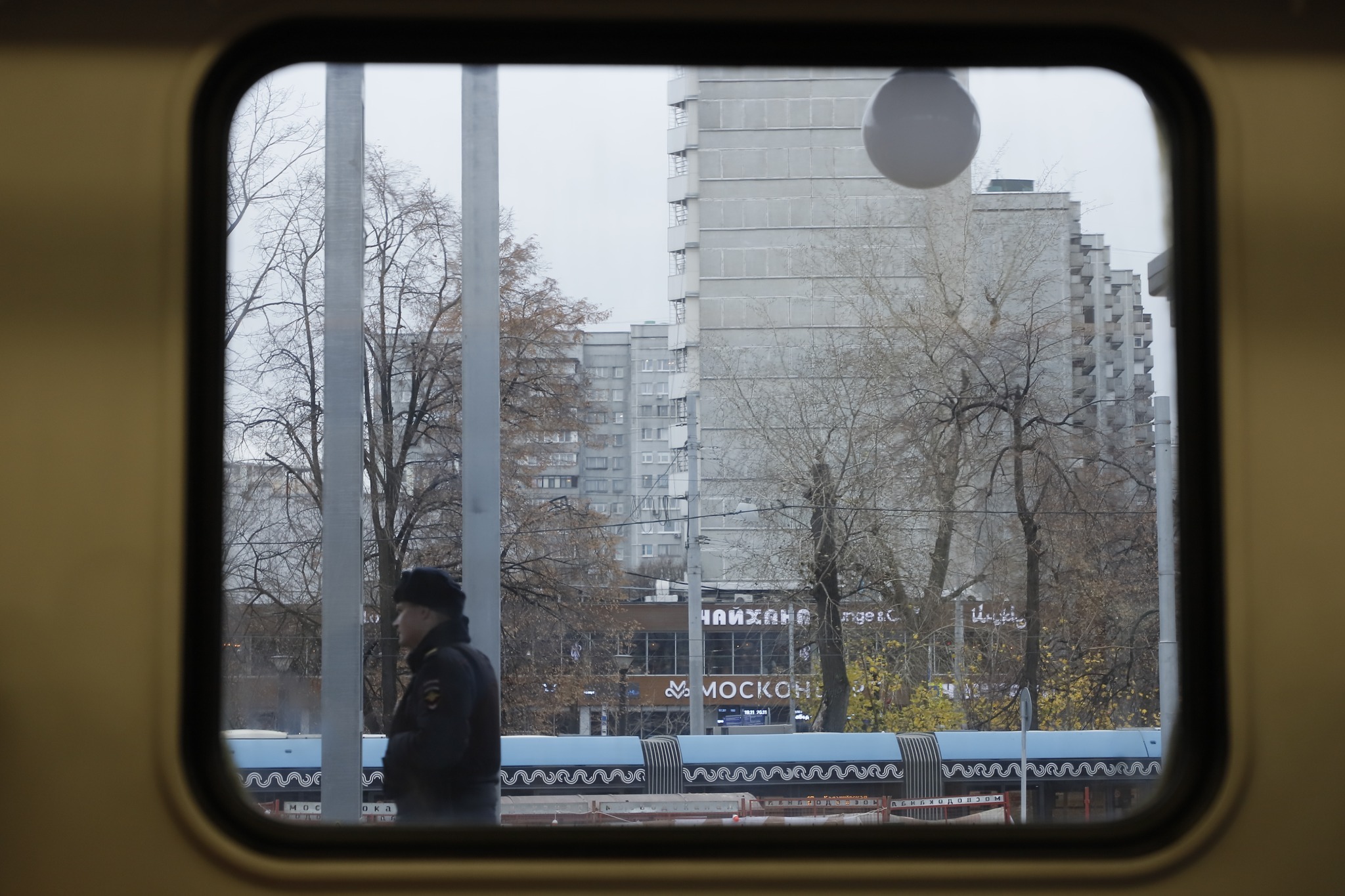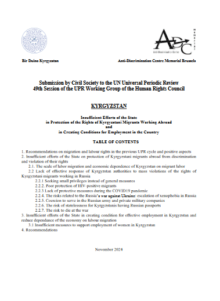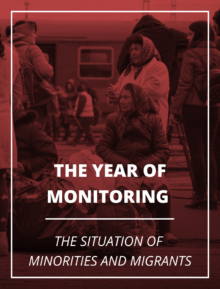The introduction of quarantine measures in the spring of 2020 caught millions of Russians by surprise: Specialists at the Higher School of Economics found that almost 10 percent of Russians lost their jobs and 40 percent saw a drop in their salaries after the epidemic started. Migrant workers found themselves in a much more vulnerable position. According to a RANEPA poll, up to 40 percent of migrant workers lost their jobs over the first months of quarantine, but they were allowed to remain and work in Russia without extending expired work permits (Directive No. 274 “On Temporary Measures to Regulate the Legal Situation of Foreign Citizens and Stateless Persons in the Russian Federation in Connection with the Threat of the Spread of the Novel Coronavirus Infection (COVID-19)” of April 2020). Prisoners in temporary detention centers for foreign nationals, however, became hostage to quarantine measures and were forced to wait out several months in these facilities, where there is a higher risk of infection, before being sent home.
By March, many migrants who lost their jobs and could not find new ones had already decided to return to their countries of origin, but faced a sharp jump (by a factor of two to three) in ticket prices. By the second half of March, no amount of money could buy them a ticket home. The unexpected border closings and cancellations of international flights left large groups of Tajik, Uzbek, and Kyrgyz citizens stuck in train stations, airports, and border areas, which forced the Russian authorities in these regions to set up tent camps, creating fertile ground for the disease to spread. Unfortunately, there is no accurate information about the number of migrants living in these camps who fell ill.
The problem of returning migrants to their countries of origin has yet to be satisfactorily resolved.
Nowhere to return to, but no way to get home
In mid-March, thousands of migrants from Central Asia got stuck at various entry points along the Russian-Kazakh border and at train stations in Russian cities. False rumors that it was possible to cross the border at an entry point near the village of Mashtakov in Orenburg Oblast spread among Uzbek migrants, and hundreds of people from all over Russia gathered there in mid-May. They were not allowed into Kazakhstan, but they also had nowhere to return to in Russia. Local authorities set up a tent camp outside the village of Bolshaya Chernigovka where people were provided with food, drinking water, and basic necessities, but witnesses said that this was insufficient and that no epidemic prevention measures were taken. As an exception, groups of migrants were moved out of the camp and into Uzbekistan through Kazakhstan several times following diplomatic negotiations: On May 20, a convoy was organized for 1,199 citizens, and on August 7 the last group of 928 migrants left the camp and took a train from Kinel Station, Samara Oblast to Tashkent.

The camp outside of Kinel became a safe haven for several thousand Uzbek citizens, who, like the ones who came before them, got stuck at the border at the end of the summer.
According to one Kinel resident, “Around August 10, about 400 people gathered on the platform at the station. They tried to squeeze into any train under any pretext as long as they could leave for home, for Uzbekistan. There was no international travel at that point, so they set up camp right at the train station, sleeping both inside and outside. Many of them knew that the Kinel line goes to Uzbekistan through Kazakhstan, and others had heard rumors that it was possible to leave from here, so after just a few days there were over 700 people here, and by August 20 there were over 1,000. They came from all over – from Astrakhan, Chita, Moscow, Saint Petersburg, and so forth. There were a lot of them at one point. It became difficult to walk through the station, and local residents started to get worried. Then the oblast administration decided to create temporary accommodations for them. Those were opened on August 21 in a field three kilometers from the city; everyone who was living in or near the station was taken there. The Ministry of Emergency Situations and other agencies set up high capacity tents there and arranged for lights and food deliveries.”
The camp became overcrowded right away because people were coming there from all over Russia. One member of the Kinel City Administration described the situation as follows:
“The good thing that we initially planned for foreign citizens turned into a huge problem for us. When we deployed this temporary camp and started analyzing who was coming from where, we found that no more than five percent were coming from Samara Oblast. The rest were coming from Moscow, Saint Petersburg, Rostov-on-Don, which has its own temporary camp, Saratov, which also has its own camp, Bashkiria, Dagestan, and so on. The more people we sent off, the more people arrived. We were planning for 800 people. But there were already 2,000 after several days, and there was nothing to be done. I remember one elderly woman who came here from Dagestan. We asked her why she didn’t stay there, and she said: ‘The administration there told us to come to Samara because people were being accepted and sent home here.’ My understanding is that they could have set up their own camp and provided people with at least some basic necessities, but instead they decided to shift everything onto us. In this situation, we allowed the migrants to stay next to our camp to avoid sending them somewhere else. They just bought tents or brought them with them and set them up on the camp’s territory. At the peak, 4,760 people were living there; over 8,000 people passed through over the 37 days the camp was open.”
According to local residents, the camp conditions were cramped, food had to be prepared over a fire, and there was no way to wash normally in the heat (there was not enough water or shower stalls, which were built by camp residents themselves). There were many elderly and ill people in the camp. Pregnant women were in the most precarious situation because they had no access to medical care, adequate nutrition, or sanitary conditions.
The migrants were taken away on a special “consular” train that arrived in Kinel from Uzbekistan every few days and collected an average of 900 people each time. Camp residents were supposed to register for departure, but this procedure was not followed because the most vulnerable had to be sent first. This provoked conflicts between people, who were tired of their multi-day stays in the overcrowded camp, and subsequently a special train car was assigned for the migrants most in need.
After the last 300 migrants set off for home, the camp was taken down on September 27, 37 days after the first migrants arrived. But a new camp was opened outside of Bogatoe, a village 50 kilometers from Kinel, the very next day in anticipation of a new influx of migrants.
Similar situations have been seen in many Russian cities that are transit points for trains bound for Central Asia. For example, in September almost 5,000 Kyrgyz citizens lived in temporary camps set up for them in Bashkiria and Orenburg Oblast because the border with Kazakhstan was closed. In early September, a tent camp was built near the Pervomayskaya Station in Rostov-on-Don for migrants from Uzbekistan. Local authorities say that it held over 3,000 people. By September 8, however, a train carrying 940 passengers had already left for Tashkent. The remaining migrants were moved to Likhaya Station in Rostov Oblast. On September 25, another almost 1,000 people were sent to Volzhsky, Volgograd Oblast, where a train was supposed to be waiting for them. About 200 people were not able to board because of mistakes made by railway personnel (tickets were not sold online, travel documents could only be obtained at the station). These people and another several hundred migrants who started converging on Volzhsky from other Russian regions lived at the station for several days until they were moved to the building of an Islamic cultural center.
A second group of 700 migrants left for Uzbekistan on September 29, and at least seven more trains were organized by November.
Closing of the borders and temporary detention centers for foreign nationals
Foreigners who have broken migration laws or been deemed “undesirable” and are subject to expulsion or deportation on these grounds also cannot leave Russia.

In addition to extending the term of work permits, the abovementioned Directive No. 274 also placed a ban on decisions related to “undesirability,” administrative expulsion, deportation or transfer under readmission procedures, and deprivation of refugee status or temporary asylum.
In practice, courts actually have stopped imposing administrative expulsion with confinement in a foreign national detention center (FNDC) for violating Russian residence rules, but they are continuing to hand down decisions on the deportation of “undesirable people.” Some judges have refused to release migrants from FNDCs because the directive is below the level of a law. According to lawyers from the Migration and Law network in Saint Petersburg and Orenburg, (see page 6 of the report “Releasing Migrants from Foreign National Detention Centers during the COVID-19 Pandemic,” https://refugee.ru/wp-content/uploads/2020/07/cvsig_karantin_itogi.pdf), the Department for Migration Affairs of the Ministry of Internal Affairs continues to issue deportation orders and file applications with courts to place foreign nationals in FNDCs, which the courts grant in most cases. Even though it is not permissible to hold foreign nationals in an FNDC indefinitely, in Moscow and Moscow Oblast only the very few people whose maximum two-year term is ending are released.
In the first months of quarantine, the situation of migrants in FNDCs was complicated by the fact that the courts were closed and had stopped accepting appeals to deportation orders; this meant that it was not possible to appeal confinement in an FNDC or the length of confinement for several months. For example, because of quarantine lawyers were not able to meet with their clients at an FNDC in Leningrad Oblast for five months—from March to the end of July, which is a gross violation of the right to a defense and to appeal a court decision. As the acting director of this facility told members of the Public Monitoring Commission for Saint Petersburg on July 24, 2020, meetings were denied because the facility does not have rooms equipped with special glass dividers and telephones that would allow for meetings during an epidemic. This was also why all visits from relatives and packages were suspended during the first month of quarantine.
In some regions (the Republic of Tatarstan, Stavropol Krai, Rostov, Sverdlovsk, Tambov, Smolensk, Samara, and Volgograd oblasts, see page 5 of the report “Releasing Migrants from Foreign National Detention Centers during the COVID-19 Pandemic”), a handful of courts considered applications submitted by electronic mail and scheduled court hearings in a timely manner.
Until recently, almost 600 people, mainly migrants from Central Asia, were being held in one of the largest FNDCs in Russia—Sakharovo (Novaya Moskva). They lived in what amounted to prison-like conditions for several months at a time and were not able to return to their home countries because of the border closures. According to information provided to ADC Memorial by members of the Public Monitoring Commission, as of early April the maximum capacity of FNDC No. 1 in Saint Petersburg was exceeded by 80 people. Thanks to cooperation between Russia’s Federal Bailiffs Service and consular offices of Kyrgyzstan and Uzbekistan, charter flights were arranged and most of these countries’ citizens were able to return home by the end of May. However, many citizens of Belarus, Ukraine, Moldova, Turkmenistan, and other countries with which air travel was suspended spent from six to nine months in FNDCs.
After repeated attempts to appeal an expulsion order, on August 31, 2020, Georgian citizen Igor Goginav was released from a Saint Petersburg FNDC after spending seven months there for exceeding the legal term of stay for a foreign national in Russia. In May, his lawyer, Yuri Serov, sent an application to stop enforcement of the deportation order to the Kirov City Court of Leningrad Oblast, which issued the deportation order, and then with the Leningrad Oblast Court, since the order could not be executed due to the suspension of flights between Russian and Georgia (at the same time, the Consular Service of the Republic of Georgia had issued a certificate of return to Goginav to replace his expired passport). In addition, the applicant had a serious illness that required treatment. Neither court was convinced by arguments about the applicant’s state of health and disrupted transportation, and they both ruled the Goginav could still be expelled. The applicant was able to get these rulings overturned only in late August 2020 after appealing to the Third General Jurisdiction Court of Cassation; he was released after seven months and allowed to return home.
The Saint Petersburg Bailiffs Service arranged for the deportation of Belarusian citizens in mid-August, six months after the borders were closed, and the deportation of Ukrainian citizens in late September.
Until this time, many facilities were overcrowded. Because of a lack of beds, prisoners were forced to sleep on mattresses in the corridor, which increased the risk of mass COVID-19 infections. There is no accurate information about the prevalence of disease among prisoners in FNDCs.
The pandemic has exacerbated the long-existing problem of medical care in FNDCs: These facilities are not able to protect prisoners from COVID infection, they are not licensed to provide medical services, and basic medical care is provided by physician assistants, whose responsibilities include examining new arrivals, taking complaints about health, and administering prescribed medications. The medical kit only contains first aid supplies. Foreign nationals are only provided with free medical care in emergencies or if their life is in danger and cannot receive specialized medical care for chronic illnesses, including tuberculosis and HIV. Many HIV-positive people awaiting deportation in an FNDC have come from correctional facilities, which, unlike FNDCs, provide them with ART therapy and even give them extra medication to take with them when they leave for an FNDC. The problem is that this supply runs out because of extended terms in FNDCs, which poses a danger to these people’s life and health. The situation is particularly serious for foreign nationals who were released from prison early and would have been deported long ago but have had to spend time in worse conditions in an FNDC because of the epidemic.
Migration flows during quarantine
Most countries will be under some degree of quarantine for the foreseeable future. The difficult situation of migrants who are not able to receive free medical care in Russia has forced many of them to find another way to get home. This is exactly why it is so important to avoid the formation of large crowds in border cities, airports, train stations, and institutions, which are all associated with the high risk of disease transmission, by organizing safe passage for people who want to return to their country of origin. It is also why all migrants and stateless persons must be released from FNDCs. In March, Russian human rights defenders published a statement (https://refugee.ru/news/%D0%B8%D0%B7-%D1%86%D0%B2%D1%81%D0%B8%D0%B3-%D0%BE%D1%81%D0%B2%D0%BE%D0%B1%D0%BE%D0%B4%D0%B8%D1%82%D1%8C-%D0%BC%D0%B8%D0%B3%D1%80%D0%B0%D0%BD%D1%82%D0%BE%D0%B2/) emphasizing that holding migrants in FNDCs could end in mass infection because FNDCs do not have “a way to organize a robust system of protection or effective medical care.”
On the other hand, Russian employers are seeking ways to circumvent strict quarantine measures and are actually bringing migrants into the country to work in the construction, service, retail, and housing and utilities sectors. Needless to say, in this case employers must guarantee proper working conditions, fair wages, epidemic prevention measures, and medical care.









 Feedback
Feedback 







